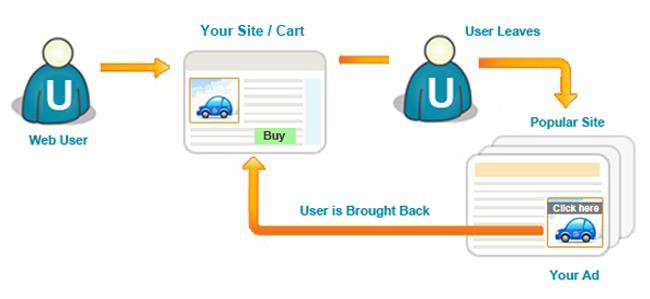What is re-marketing?
Have you ever been onto a website and then noticed that adverts for the same business or product keep popping up in other places online?
How do you explain it?
A. Coincidence
B. The site owner is spending a fortune to advertise all over the web
C. Something slightly sinister is going on
In fact it's none of the above (OK, a little bit of C if you're freaked out by this sort of thing). Instead, it's a system called re-marketing, another pay-per-click service from Google.
What is re-marketing?
Re-marketing is a way in which businesses can attract back visitors who went to their website once, but then left the site for elsewhere.
On a very basic level, re-marketing helps to create brand awareness and traction through repeated exposure. Every time your prospect sees your re-marketing advert, they will be reminded of their previous interest and encouraged to go back to your website for another look.

There are various statistics around on how many times a buyer visits a website before committing to a purchase - we're currently working with a client where we believe the number to be 12. Repeated research visits before contacting or buying are particularly prevalent in B2B marketing where the buying cycle is invariably long.
Re-marketing then is the tool that we use to keep our clients' names in front of interested visitors and persuade them to come back ....and back and back and back, until they take the important next step.
How does re-marketing work?
Re-marketing uses those little devils called cookies. An invisible bit of JavaScript tag is placed in the footer of a website which leaves a ‘cookie' in a visitor's browser.
The visitor will then be targeted with the site owner's display adverts when they visit other sites that have sold space to Google. News sites and popular blogs all sell space in this way.
What types of re-marketing are there?
There are several different types of re-marketing available:
Site re-marketing
This is the display of adverts on third party websites as described above.
Search re-marketing
This is where a user of a search engine will be targeted with display ads based on their search queries. The searcher won't necessarily have visited your site previously, so it's a great way of putting your business in front of people who you know are actively searching for the product or service you offer, but might not have heard of you - yet.
Contextual re-marketing
Slightly more complicated than site re-marketing, this is where websites that share similar customers, but don't compete, can partner up to share their cookies. If a visitor leaves one site and later visits a partnered site, adverts for the previous site will be displayed on the current one.
Remarketing for mobile apps
If you've got an app, this allows you to reach customers who have downloaded it when they are using other apps.
Does re-marketing actually work?
Most people, if asked, will say they filter out and do not remember the display ads they see on websites. That might be true at a conscious level, but the sub-conscious mind does strange things and we all take in more than we think. Re-marketing adverts have an added advantage, in that they are targeted and relevant. If you've got this far into the post, it's probably because you answered ‘yes' to the question I asked at the beginning - so you do remember seeing re-marketing adverts after all!
According to SeeWhy, 26% of customers will return to a site through re-marketing. This is up from 8% of interested customers who will return to a site without it.
Our own experience is that re-marketing does work, particularly in B2B. We like it because we can use it to improve the ROI of integrated campaigns. For example, if we are using SEO and traditional Adwords to bring traffic to a client's site, we can use re-marketing to keep those visitors coming back until they buy or register. The same is true of an email campaign where the email can drive the first visit through a click on a link.
There are various ways to optimise re-marketing performance and we'll cover these in another post.
In the meantime, if you want to know more about how re-marketing could be made to work for your business, pleasegive us as call.
Diagram sourced from autofusion.com

Author
Neil Edwards
Neil is a Chartered Marketer and Fellow of the Chartered Institute of Marketing with many years' experience in marketing, brand and communications.
CEO / The Marketing Eye
Related Reading

Blog: How to Get More From the CRM You’re Already Using
by Darren Coleshill, 2 minute read

Blog: The Best Times to Post on Social Media in the UK (B2C Guide)
by Darren Coleshill, 3 minute read